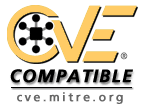Reliance on DNS Lookups in a Security Decision |
| Weakness ID: 247 (Weakness Variant) | Status: Incomplete |
Description Summary
Example 1
The following code sample uses a DNS lookup in order to decide whether or not an inbound request is from a trusted host. If an attacker can poison the DNS cache, they can gain trusted status.
IP addresses are more reliable than DNS names, but they can also be spoofed. Attackers can easily forge the source IP address of the packets they send, but response packets will return to the forged IP address. To see the response packets, the attacker has to sniff the traffic between the victim machine and the forged IP address. In order to accomplish the required sniffing, attackers typically attempt to locate themselves on the same subnet as the victim machine. Attackers may be able to circumvent this requirement by using source routing, but source routing is disabled across much of the Internet today. In summary, IP address verification can be a useful part of an authentication scheme, but it should not be the single factor required for authentication.
| Many DNS servers are susceptible to spoofing attacks, so you should assume that your software will someday run in an environment with a compromised DNS server. If attackers are allowed to make DNS updates (sometimes called DNS cache poisoning), they can route your network traffic through their machines or make it appear as if their IP addresses are part of your domain. Do not base the security of your system on DNS names. |
| Nature | Type | ID | Name | View(s) this relationship pertains to |
|---|---|---|---|---|
| ChildOf |  Weakness Class Weakness Class | 227 | Failure to Fulfill API Contract ('API Abuse') | Development Concepts (primary)699 |
| ChildOf |  Weakness Class Weakness Class | 345 | Insufficient Verification of Data Authenticity | Research Concepts1000 |
| ChildOf |  Weakness Base Weakness Base | 807 | Reliance on Untrusted Inputs in a Security Decision | Research Concepts (primary)1000 |
| PeerOf |  Weakness Base Weakness Base | 290 | Authentication Bypass by Spoofing | Research Concepts1000 |
| CAPEC-ID | Attack Pattern Name | (CAPEC Version: 1.4) |
|---|---|---|
| 89 | Pharming |
| Submissions | ||||
|---|---|---|---|---|
| Submission Date | Submitter | Organization | Source | |
| 7 Pernicious Kingdoms | Externally Mined | |||
| Modifications | ||||
| Modification Date | Modifier | Organization | Source | |
| 2008-07-01 | Eric Dalci | Cigital | External | |
| updated Time of Introduction | ||||
| 2008-09-08 | CWE Content Team | MITRE | Internal | |
| updated Relationships, Other Notes, Taxonomy Mappings | ||||
| 2009-05-27 | CWE Content Team | MITRE | Internal | |
| updated Relationships, Taxonomy Mappings | ||||
| 2009-07-27 | CWE Content Team | MITRE | Internal | |
| updated Demonstrative Examples | ||||
| Previous Entry Names | ||||
| Change Date | Previous Entry Name | |||
| 2008-04-11 | Often Misused: Authentication | |||





